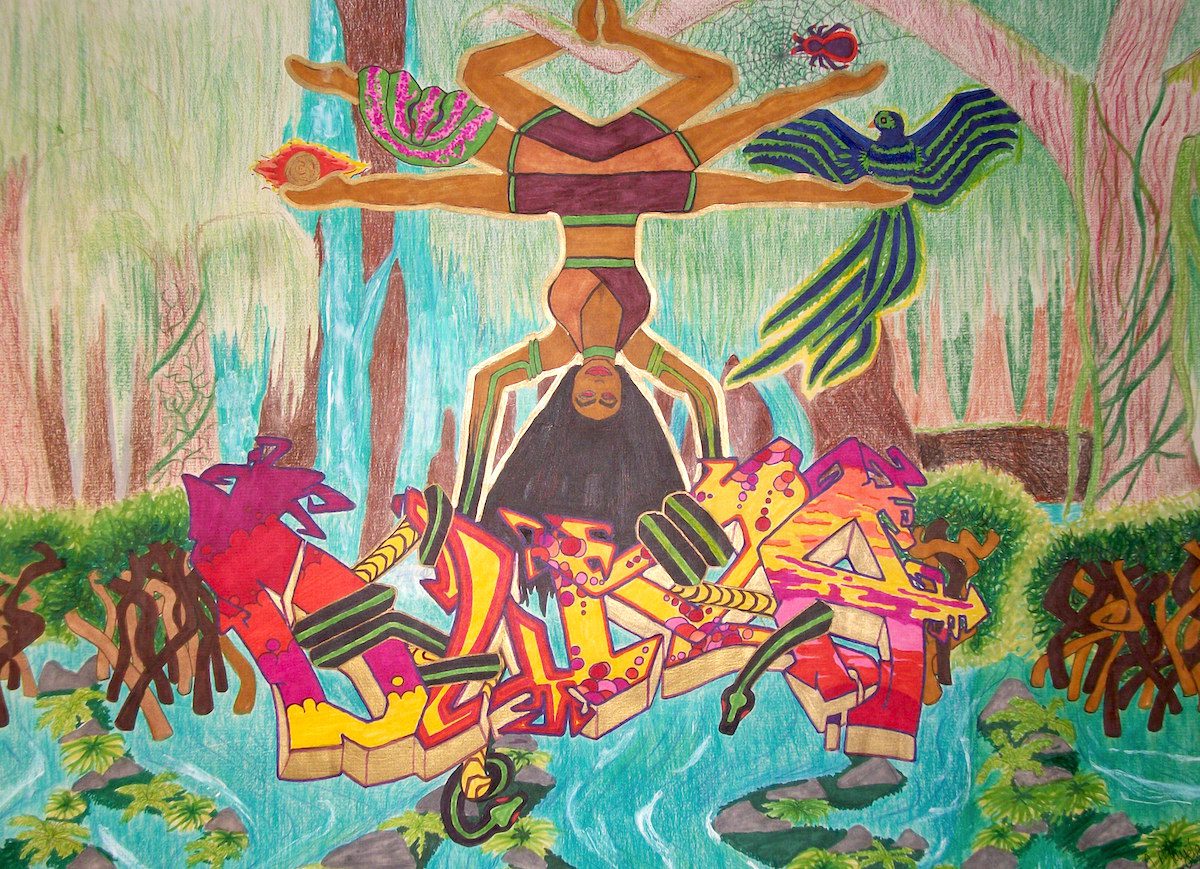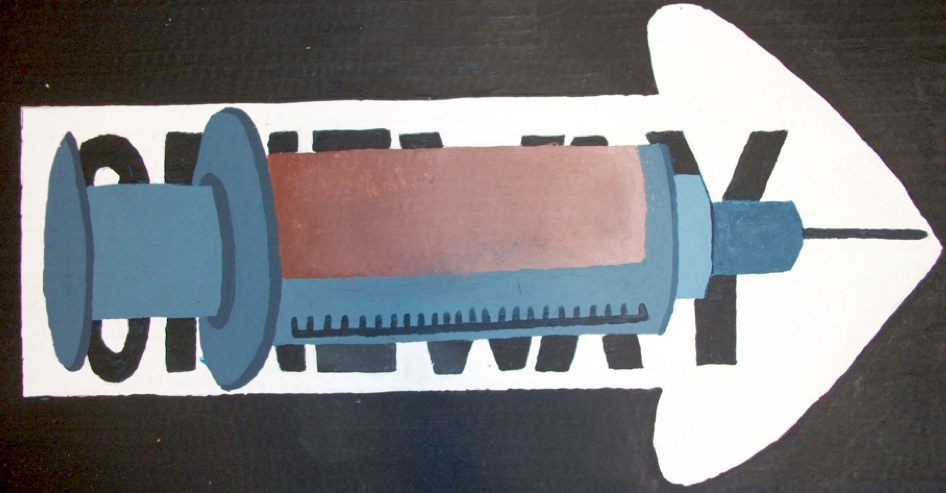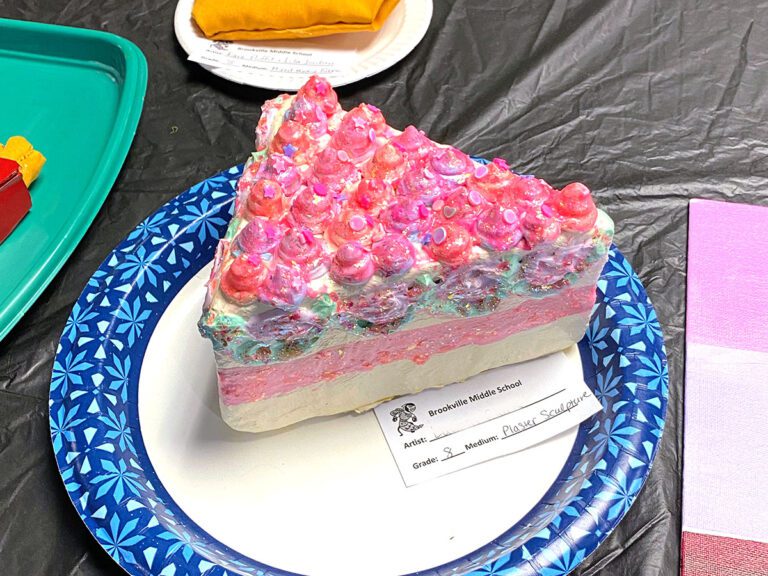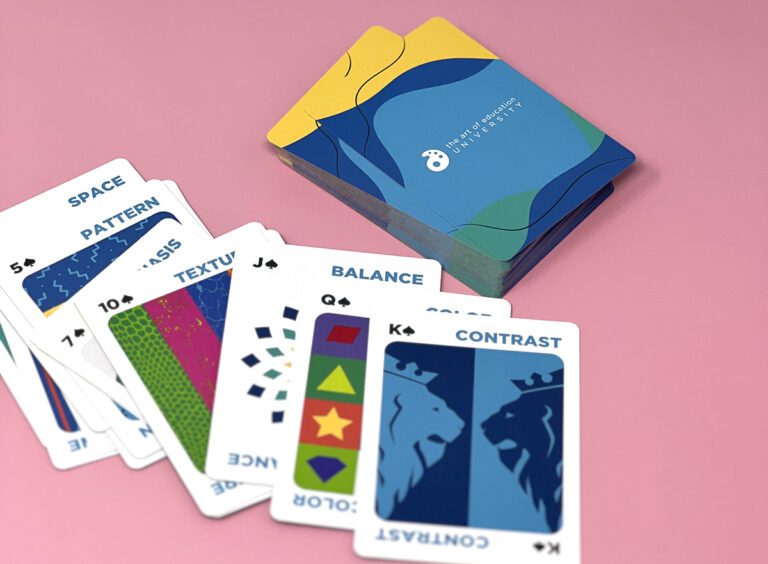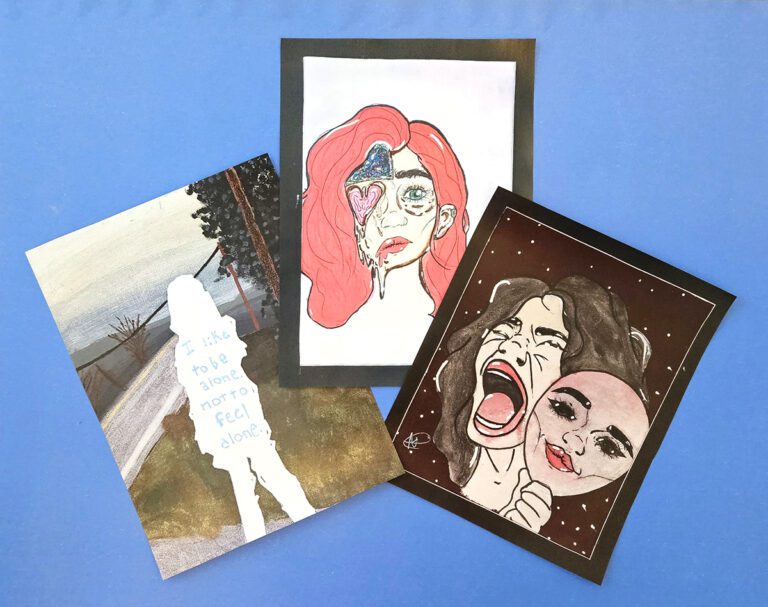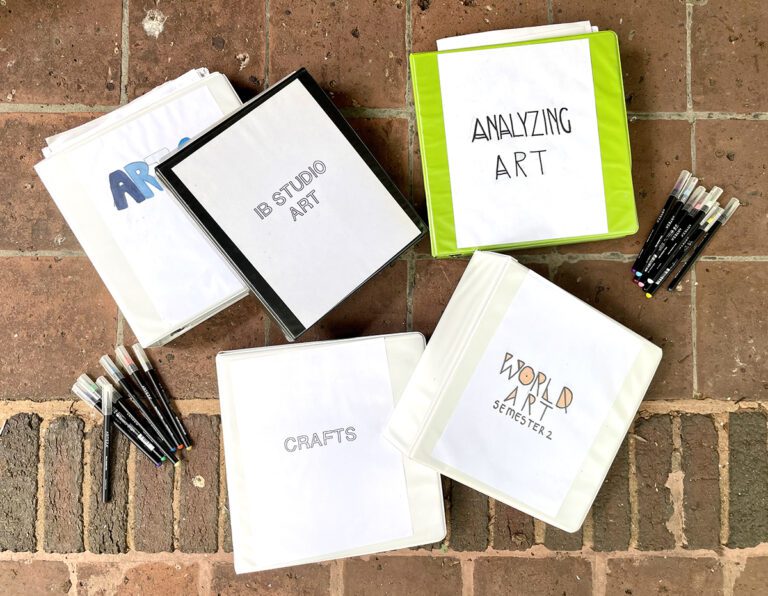When you have the chance to design your own curriculum, it’s easy to get stuck. There’s just so much you could include, but what should you include? Of course, that “should” depends on your teaching philosophy and your student population. No matter which direction you go, it can be nice to have a concrete example. That’s why, today, I’m sharing the entire curriculum for my Visual Arts course.
This year-long course is mandatory for all sophomores at my school, many of whom have never previously taken art. It aims to build on their rookie skills while simultaneously developing their capacity to make their own artistic choices by tapping into their interests.
Below you’ll see all 6 units broken into 3 different categories: the materials you’ll need, the scaffolding exercises students do to build skills, and the more involved summative assessment assignment that asks students to put together everything they’ve learned. I hope you find it helpful!
A Sample Visual Arts Curriculum Map
Unit 1: Graffiti-Inspired Design
Materials
- Paper
- Pencils
- Colored Pencils
- Markers
Scaffolding Assignments
- Dry-erase board lettering experiments
Students practice different kinds of graffiti lettering and font styles on dry-erase boards. The low-pressure materials allow for lots of practice and encourage student experimentation.
- Graffiti Alphabet
Students design each letter using a different technique or artistic concept being studied (warm/cool/neutral colors, complementary colors, one-point perspective, overlapping, and gradation).
- One Word and One Image Design
This is a formative assignment where students choose one word that reflects some aspect of identity. They design that word and combine it with a drawn and colored image, using artistic conventions studied.
Summative Assessment: Code Name Design
The Code Name assignment asks students to invent and design a name that represents some aspect of their identity. Along with the design of that name, students are required to implement a symbolic image and a visual metaphor to reflect who they are. The artist statement that follows engages students to explain the meaning behind their name and artistic choices.
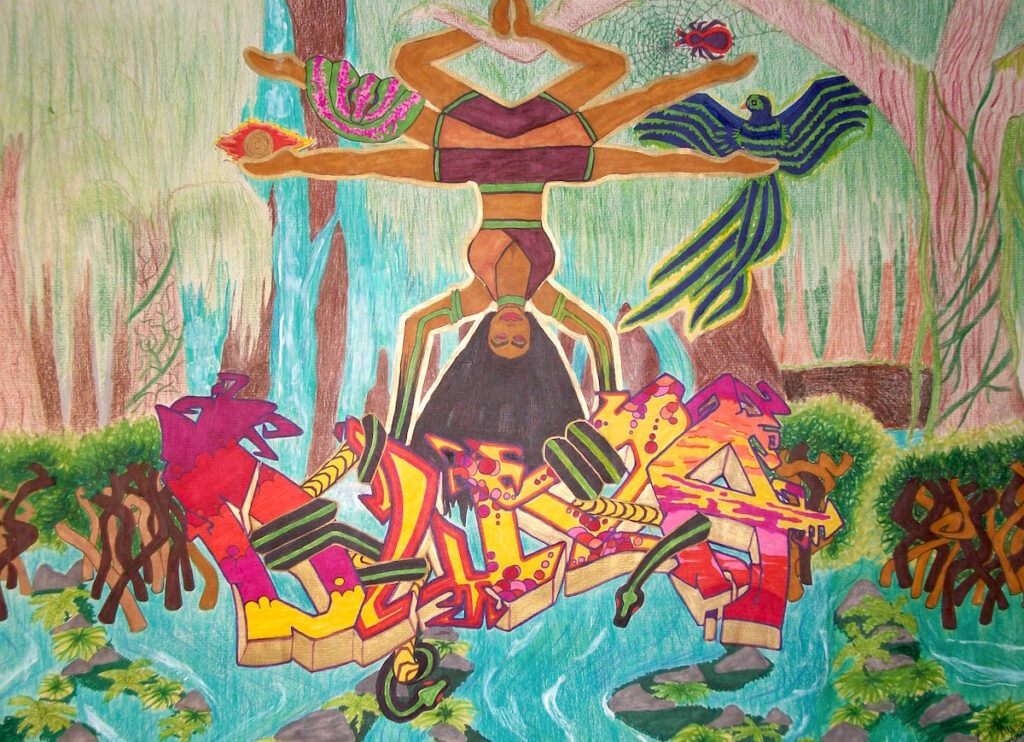
Unit 2: Painting
Materials
- Acrylic Paint (Red, Yellow, Blue, Magenta, White, Red Oxide, Yellow Oxide)
- Brushes
- Cups for Water
- Palette Knives
- Palettes (cardboard works well)
- Rags
- Paper
- Cardboard or other painting surface
Scaffolding Assignments
- Value Scales
Using white on one side and a formula of 4 parts blue, 2 parts red, and one part yellow to make the darkest value on the other, students must paint a value scale.
- Analogous Color Value Scales
After choosing three analogous colors, students create value scales of between 5 and 9 values for each color in their analogous scheme.
- Painting an Orange
Students draw and paint an orange noticing the light and shadow and building upon their value scale lessons. Photocopies work best for reference materials so students can use them from class to class.
- Painting an Orange II
This assignment is the same as the previous except students are asked to paint the background first and move into the foreground last.
- Painting an Apple
Students draw an apple and paint it in, including the background. Photocopies work best for reference materials so students can use them from class to class.
- Painting a Flower
Students draw and paint a flower. Photocopies work best for reference materials so students can use them from class to class.
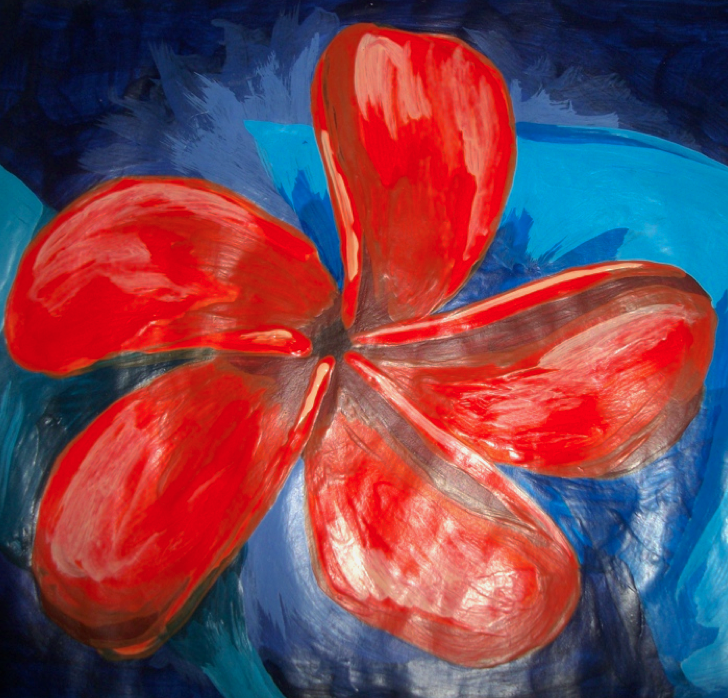
Summative Assessment: Painting with a Purpose
Students create a painting on a piece of cardboard that expresses some sort of message. The message can be of any kind, such as personal, serious, humorous, or political. Students are required to implement a painted frame of some kind into their piece, as well as symbolic imagery. Words are optional. Students must also apply at least three artistic conventions studied over the year.
Unit 3: Create a Cartoon Character
Materials
- Acrylic Paint (and supplies)
- Markers
- Colored Pencils
- Paper
- Cell Phones
Scaffolding Assignment
- Cartoon Character Mash-Up
Using a cartoon characteristic face guide, students practice drawing various characters using different styles of facial features.
Summative Assessment: Create a Cartoon Character
Students create a new cartoon character. The character can be based off existing characters, but must be altered significantly to be an original creation. Students must use paint for at least half of the piece and can choose to use colored pencils and markers for the other half. I also ask students to create a 30-second story for their character that they present in front of the class.
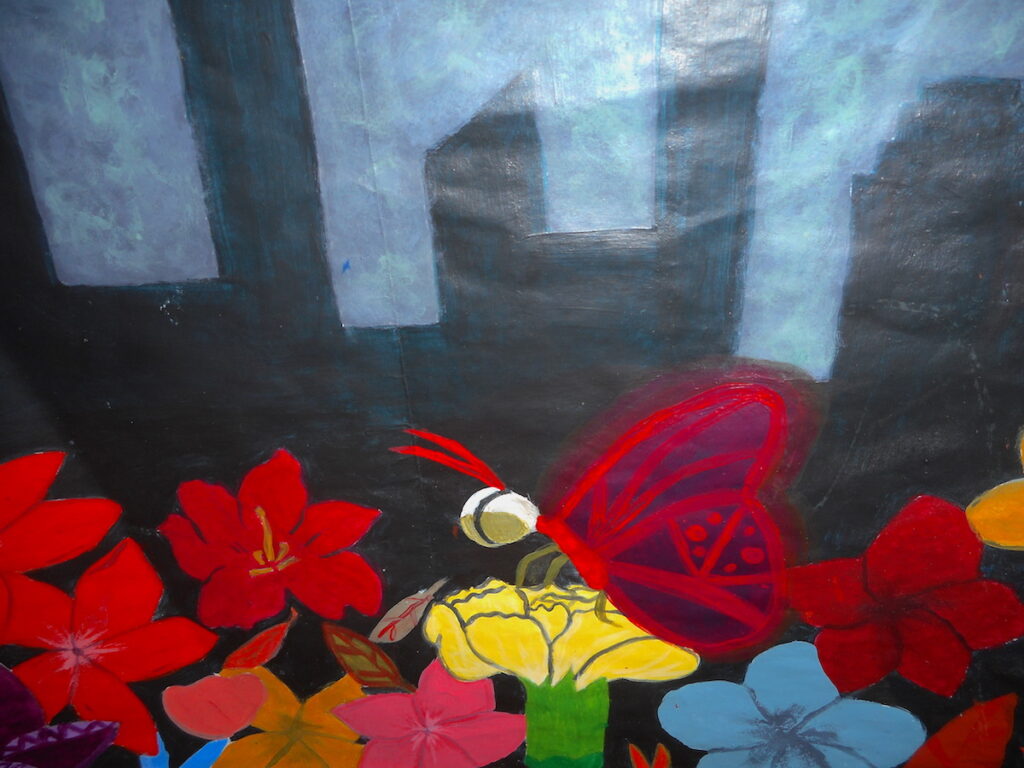
Unit 4: Portraiture
Materials
- Acrylic Paint (and supplies)
- Markers
- Colored Pencils
- Paper
Scaffolding Assignment
- Face Drawing Challenge
This is more of a weekly event where I do drawing lessons with the students who want them. Others will practice drawing various photocopies of faces on their own during class.
Summative Assessment: Portrait Piece
Students draw and paint a portrait of their choice. Many students use their phones for visual references. I also have various photocopies of faces as well. Students must paint at least half of the composition with the option to use colored pencils or markers if needed. Application of two or more artistic conventions studied is also required.
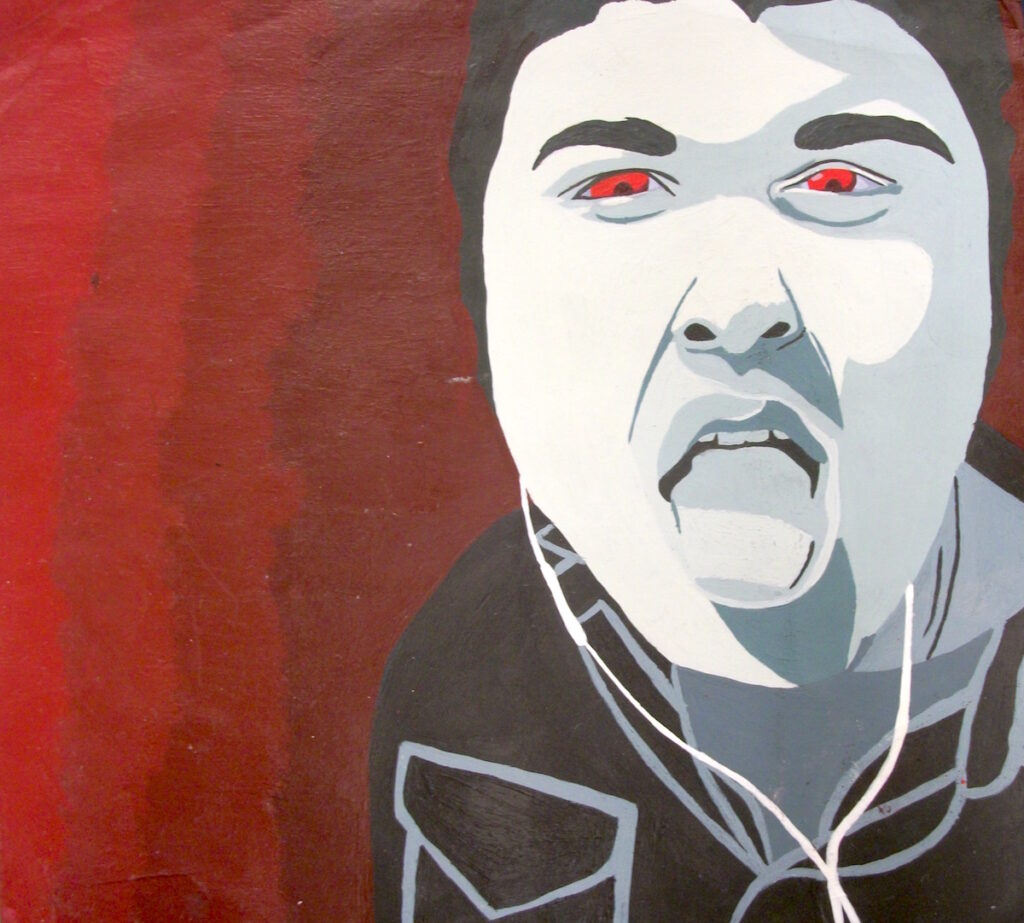
Unit 5: Paper Plate Mask
Materials
- Small Paper Plates
- Tin Foil
- Hot Glue Guns and Hot Glue Sticks
- Newspaper
- Flour
- Water
- Painting Supplies
Assignment: Painted Papier-Mâché Mask
Students engage in the process of three-dimensional work through a mask. Facial features are created using tinfoil including eyebrow ridges, a nose, and lips. Using hot glue, students apply the features to their plates. Papier-mâché is then used to cover the facial forms and create a mask. Students draw and paint the face however they like incorporating artistic conventions studied throughout the year.
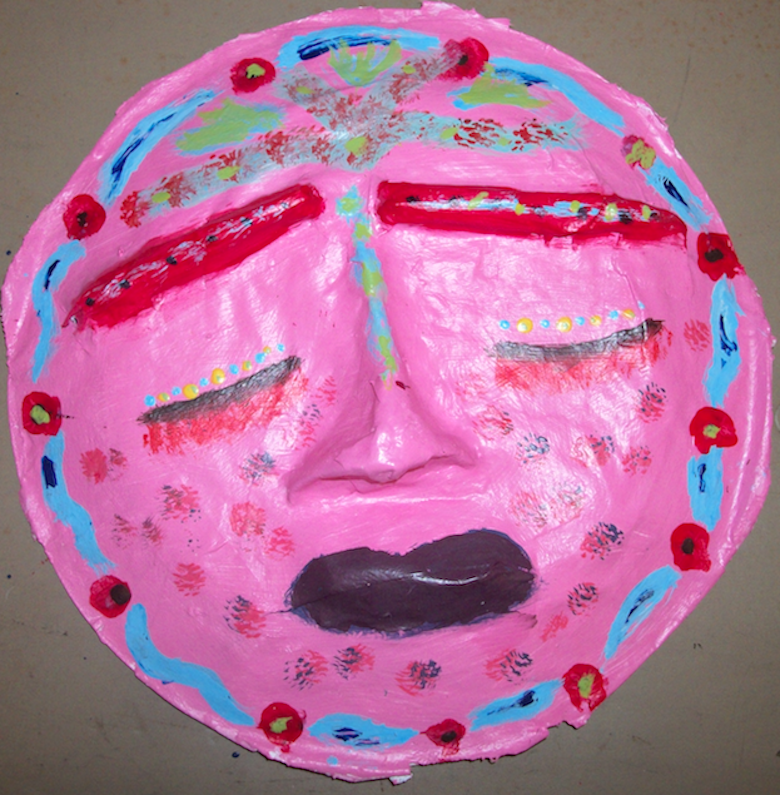
Unit 6: Independent Final Project
Materials
Everything you have PLUS whatever is left in the budget for purchase. Some examples from my class would be: plaster, painting supplies, cardboard, canvas board, clay, wood, paper, colored pencils, markers, and pastels.
Assignment
Students have 7 weeks to create a proposal sketch, get that approved by me, and then generate their best piece of art. There are three requirements to this project: 20 or more hours of work, completion of at least one art piece, and a final presentation to the class. I keep track of time each day by making hourly tallies in my grade book. Students choose to work individually or in groups of 2 or 3, and the media they use is their own choice. This final project always leads to high levels of intrinsic motivation and quality work.
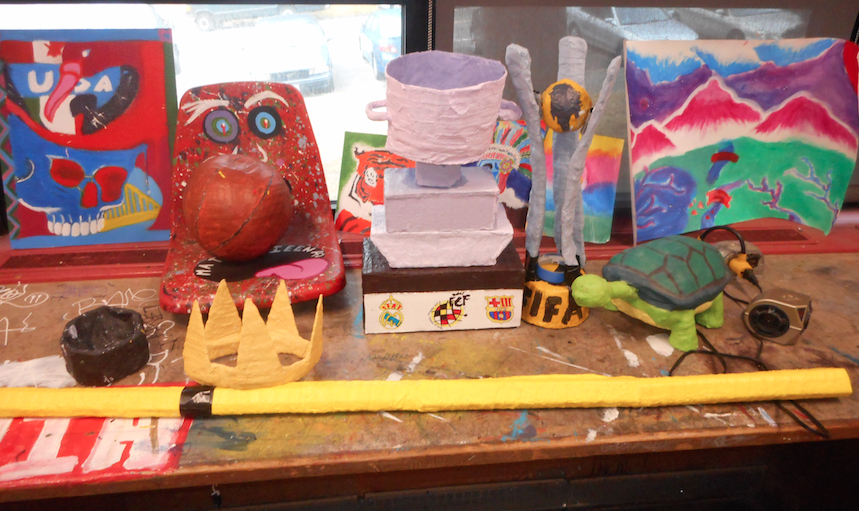
Throughout this year-long course, my goal is for students to see themselves as artists while building basic skills. This course map has transformed countless students from believing art has no relevance in their lives to knowing they are truly artists.
What are your most successful units throughout the year?
What further questions do you have about the units and assignments discussed here?
Magazine articles and podcasts are opinions of professional education contributors and do not necessarily represent the position of the Art of Education University (AOEU) or its academic offerings. Contributors use terms in the way they are most often talked about in the scope of their educational experiences.
